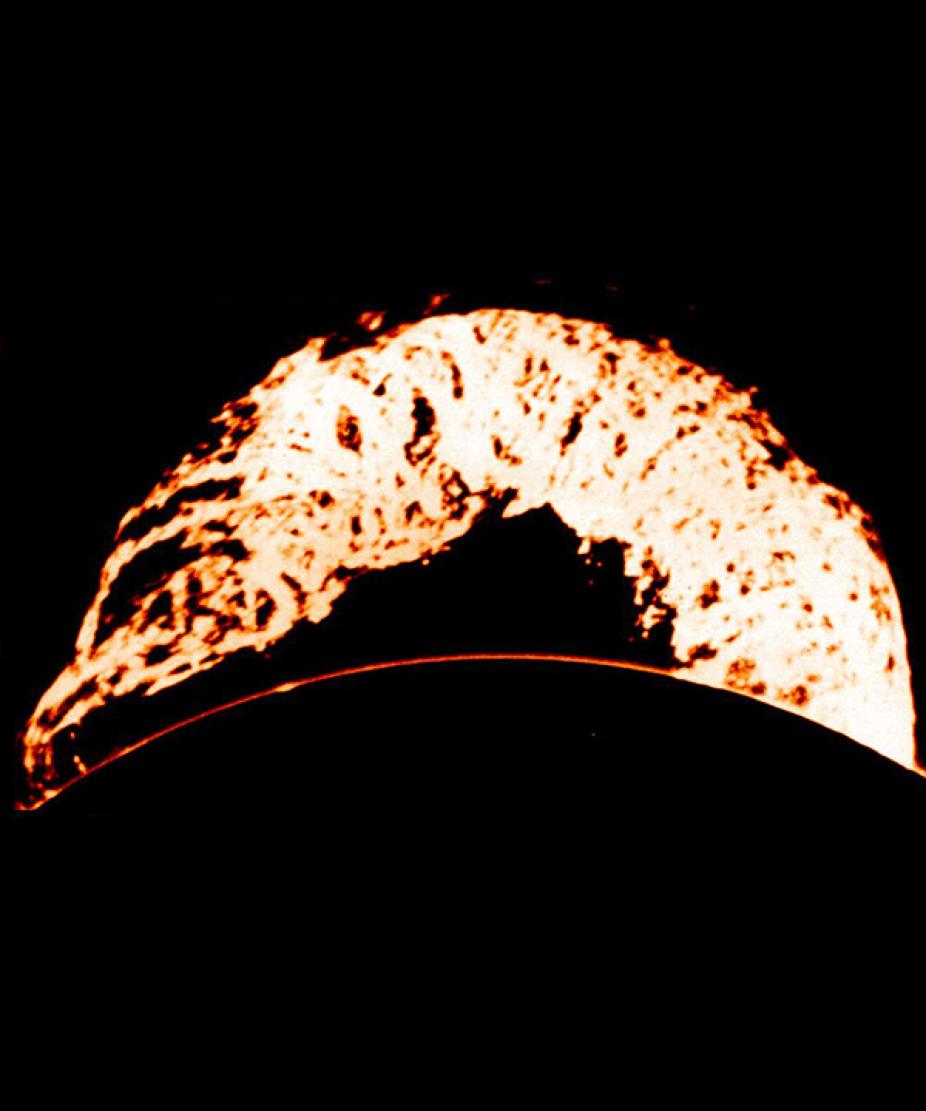Why do we study the Sun?

This prominence was photographed in June 1946, and extends some 200000 km above the solar surface; the Earth would easily fit under it. The bright arch at the bottom of the picture delineates the solar limb.
Without the Sun, life on Earth would not exist. Our planet would be a frozen dark ball, drifting dead in space. We need the Sun for light, heat and energy. With the Sun, plants can grow and animals can eat. The Sun's output changes over time, and solar activity drives space weather. This not only effects our daily lives and climate, but also threatens our power grids and satellites. The more we know about the Sun, the better we can deal with these changes.
In the past, we know the Sun was a little different than it is now, and at those times the Earth experienced ice ages. During the most recent ice age, almost all of Canada and the Northern US was covered in a huge sheet of ice about a mile thick! (That's about 1.6 km.) Even recently, in the late 1600s, Europe and North America were a bit cooler than they are now, experiencing a little ice age, and changes in the Sun were most likely responsible (our current warming, however, is due to the build-up of greenhouse gasses in the atmosphere).
Learning more about the Sun helps us to better understand other stars, and this helps us understand better the universe in which we live.
Of course, scientists also study the Sun for the joy of discovery, just to find out how it works!